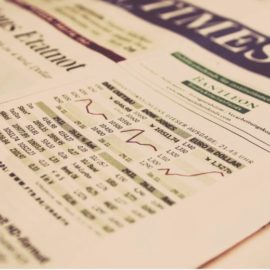

This article is an excerpt from the Shortform book guide to "The Intelligent Investor" by Benjamin Graham. Shortform has the world's best summaries and analyses of books you should be reading.
Like this article? Sign up for a free trial here .
What was AAA Enterprises? How did the company fall and what business lessons can we learn from it about investing?
AAA Enterprises was a business that sold mobile homes. They entered the stock market and grew rapidly, before filing for bankruptcy in 1971.
Read more about AAA Enterprises and its stock history.
What Happened to AAA Enterprises?
In the late 1960s, the markets enjoyed a “franchising” craze—anything in the market with “franchising” in its strategy received hype and heady valuations.
In this environment, AAA Enterprises entered the stock market. Its historical business was selling mobile homes; it seized on the idea of franchising this business, allowing others to sell mobile homes with its corporate name. It had another business of preparing tax returns (using mobile homes as offices); this business too was turned into a franchise business.
In 1969, AAA Enterprises sold 500,000 shares to the investing public, at $13 per share. The stock soon more than doubled to 28, producing a valuation of $84 million. For the company’s financial performance, this price was astronomical—this price was ten times book value; at earnings of $690,000, the price-to-earnings ratio was 115 times!
By this point in the book, an intelligent investor knows to be skeptical of overhyped stocks that are driven by wild speculation and promises of limitless future growth. AAA Enterprises soon fell to the ground:
- The company grew quickly, opening retail carpet stores and acquiring a manufacturer of mobile homes. These appeared to be poor ventures—in the fourth quarter of 1969, the company lost $4.4 million, dwarfing all the money it raised in the stock offering and its earnings to date.
- Through 1970, the company continued to lose money and was supported by loans from the company’s founder.
- In 1971, AAA filed for bankruptcy.
Graham isn’t shy about blaming the parties involved for such a clear failure:
- The underwriters clearly profited from the jump in share price, not just for this company but in encouraging imitator IPOs who also wanted to cash in on the exuberant times.
- Speculators are “incorrigible” and will “fall for” any company spouting the latest buzzwords, regardless of actual company performance.
- AAA Enterprises designed itself to take advantage of the franchising hype—it even likely chose the name “AAA” so that it’d appear first in listings of stocks, thus being a beneficiary of speculative energy.

———End of Preview———
Like what you just read? Read the rest of the world's best book summary and analysis of Benjamin Graham's "The Intelligent Investor" at Shortform .
Here's what you'll find in our full The Intelligent Investor summary :
- Key advice from what Warren Buffett considers the "best book about investing"
- The 2 major indicators you should use for evaluating stocks
- How you can use aggressive or defensive investing strategies






